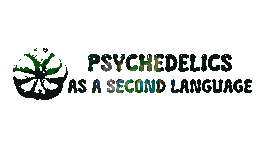First atlas of the whole human brain at the single-cell level: What does it mean for Psychedelic Research?
On October 13, 2023, a team of researchers created the most extensive atlas of the human brain thus far, revealing more than 3,000 cell types, including many new to the scientific world. In the atlas, we can observe detailed snapshots of the most complex organ known to man, the brain.
Mapping the human brain has been previously done using techniques such as MRI (Magnetic Resonance Imaging), but never to this detail. The developed atlas shows the whole human brain at the single-cell level, showing its complex molecular interactions, thus allowing us to study in-depth mental diseases, cognition, and what makes us human more than we were ever able to.
Now, to get to the nitty-gritty of things, how was this atlas exactly made?
The research is part of the US National Institutes of Health’s Brain Research through Advancing Innovative Neurotechnologies Initiative — Cell Census Network (BICCNUS) and is a collaboration between hundreds of scientists using the single-cell sequencing technique.
First, researchers started with a small piece of frozen brain tissue from a biobank, making sense of it by sequencing the cells, measuring all the genes, and clustering all the types of cells on the basis of the overall gene expression pattern, subsequently using the data from the donor’s brain, and putting the functional information where it belongs spatially.
How are the studies organized, and how can scientist profit from it?
The studies were organized into five themes:
-
- Adult human single-cell atlasing, including studies using single-cell transcriptomic and epigenomic analyses to characterize the human brain;
-
- Adult NHP single-cell atlasing, which focuses on similar single-cell analyses in marmoset and macaque brain;
-
- Comparative single-cell analyses that compare cellular composition in human versus NHP brain;
-
- Human and NHP brain development single-cell analyses that focus on the characterization of developmental dynamics in developing human and NHP brain;
-
- Human neuronal cell-type functional and anatomical analysis and modeling, which includes the physiological and anatomical characterization of cellular properties in living human tissues, and the modeling of cell types and specialized cellular properties in humans versus rodent models;
With the collected data, researchers will now be able to get the answers to fundamental scientific questions about the human brain and its genetic organization. It’s arguably safe to say that the era of brain exploration at a cellular level starts now.
How can this influence our future?
The project aims to generate a complete atlas of cell types in the human brain across the lifespan and map cell interactions that underlie a wide range of brain disorders. That being said, by completing this atlas, we will obtain answers that are incognito for the scientific world until today, such as a possible cure for Parkinson’s disease, a cure for depression, or even a potential cure for Alzheimer’s.
What does it mean to psychedelic research?
Psychedelics recently had a boom in their research in the treatment of various mental illnesses, and many have tried to figure out how these substances work in our brains and how these changes can subsequently modulate our consciousness.
However, both of these themes are considerably on the surface of research due to the complexity of human nature.
The brain is a complex organ with various neurons, neurotransmitters, and their subtypes. Understanding how an exact substance works on every site and how it acts in a certain way to treat a pathology would need years of work.
In the case of psychedelics, due to their legality, the research is heavily delayed, and a big chunk of the research we have available is research done in the ’60s, when these substances were legal to experiment and to research.
Having this atlas and paved research on our brain would allow scientists to save time, be more precise in how these substances work, and be able to understand the pathways of these compounds in our brain, thus allowing them to create analogues of these compounds for the treatment of various mental illnesses that are currently ongoing studies much quicker.


